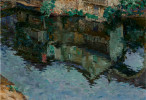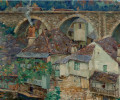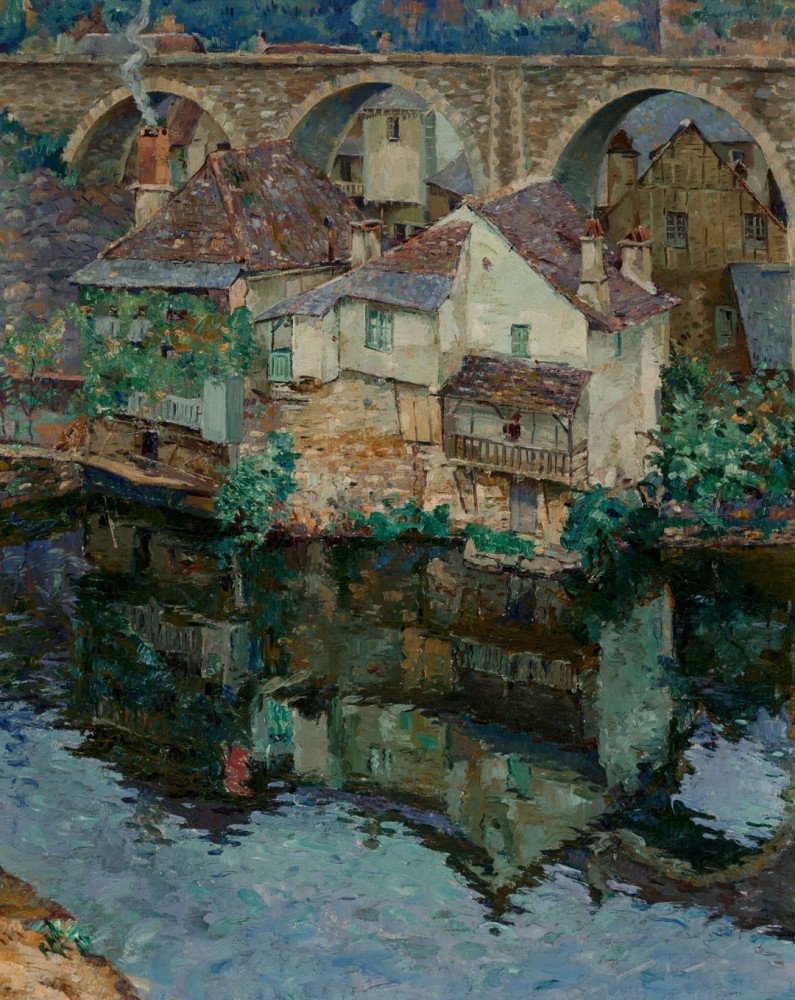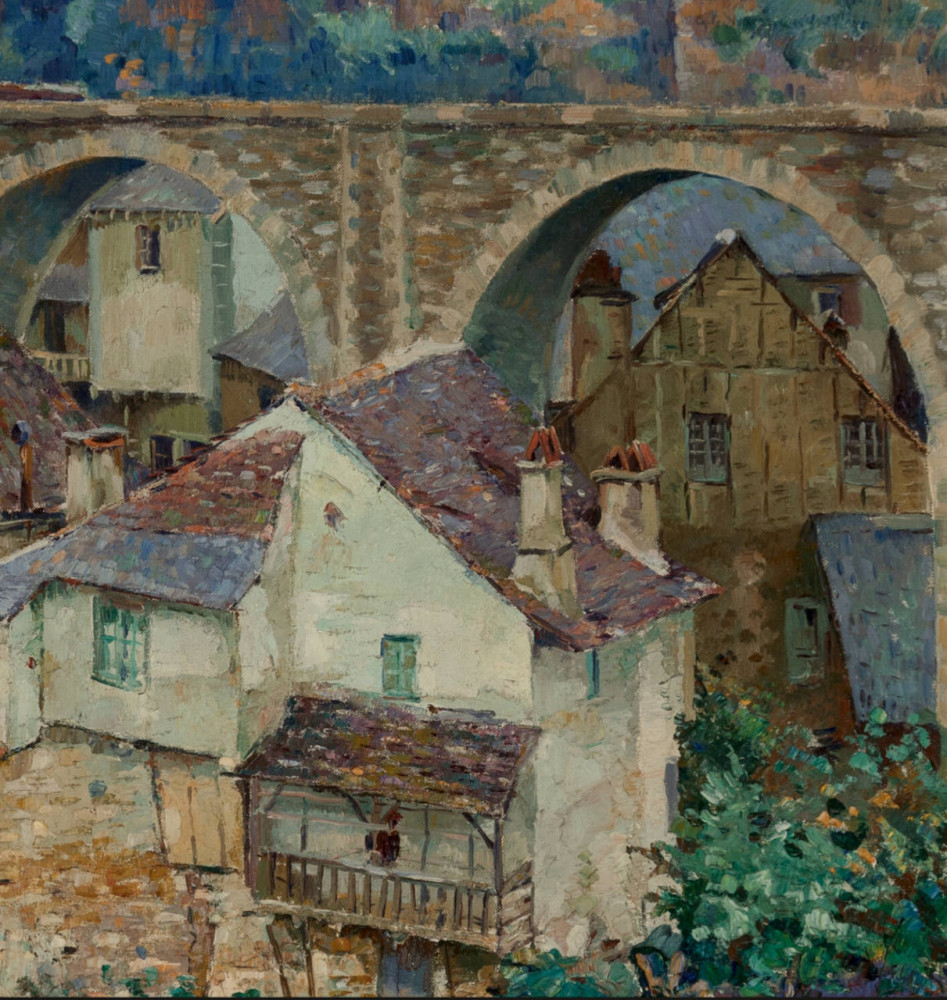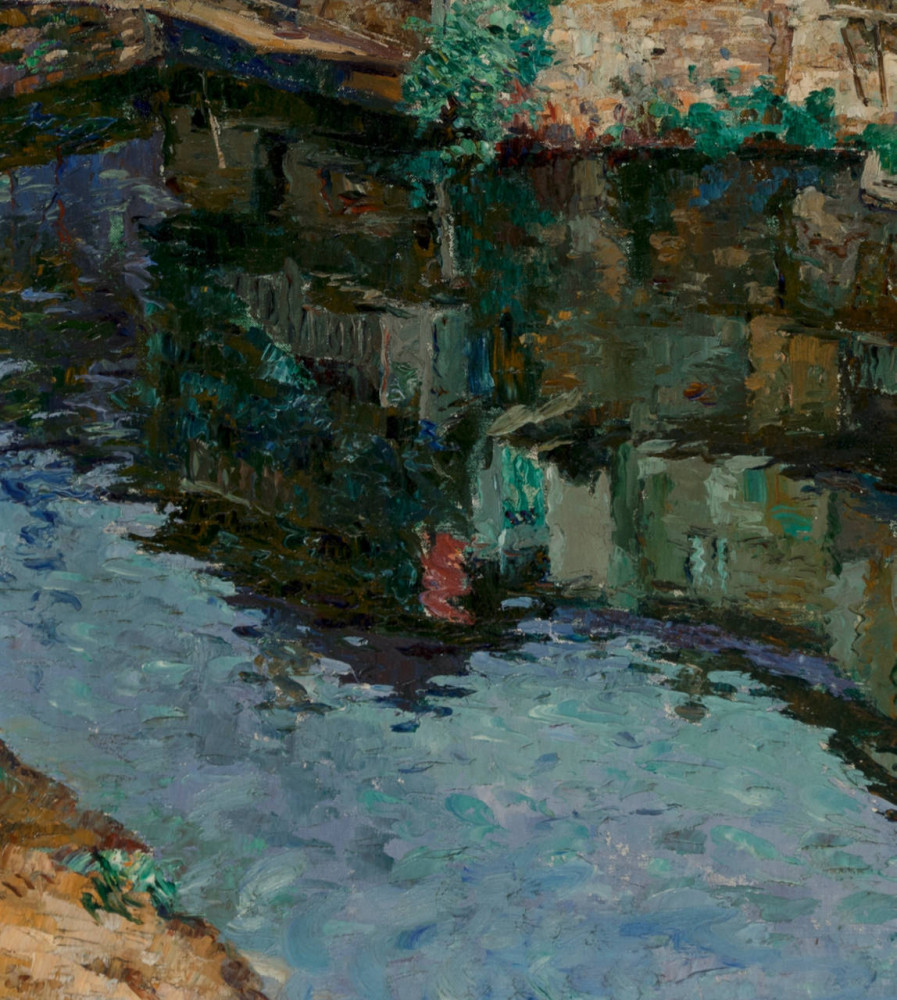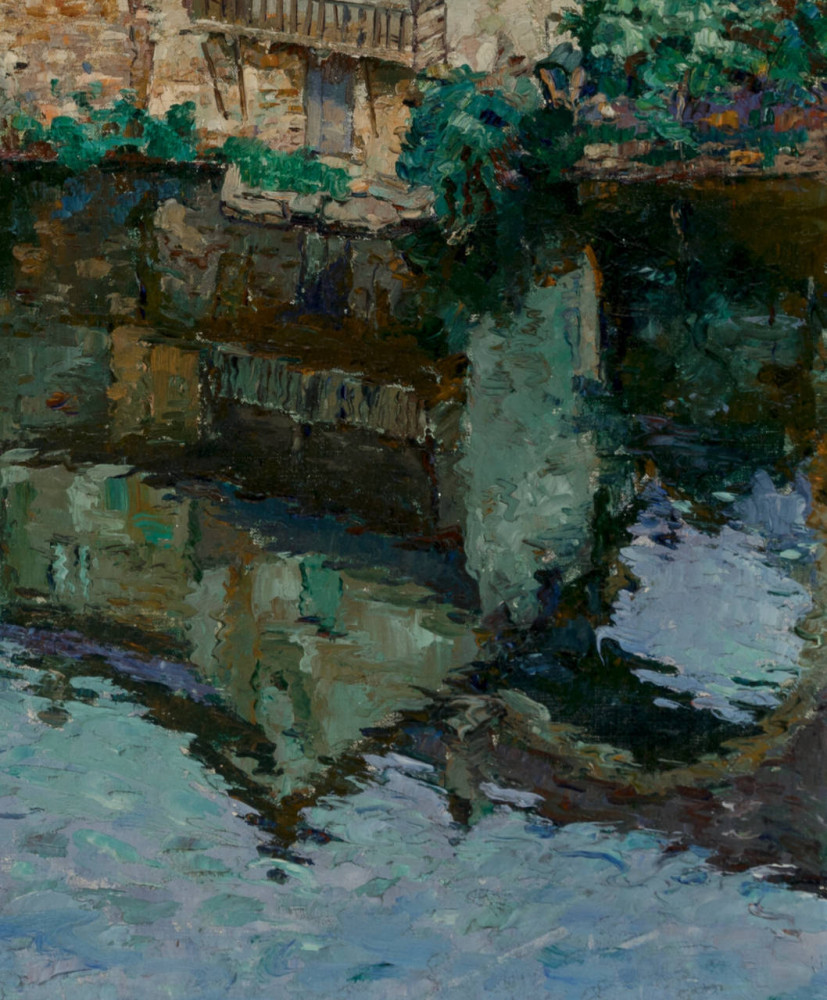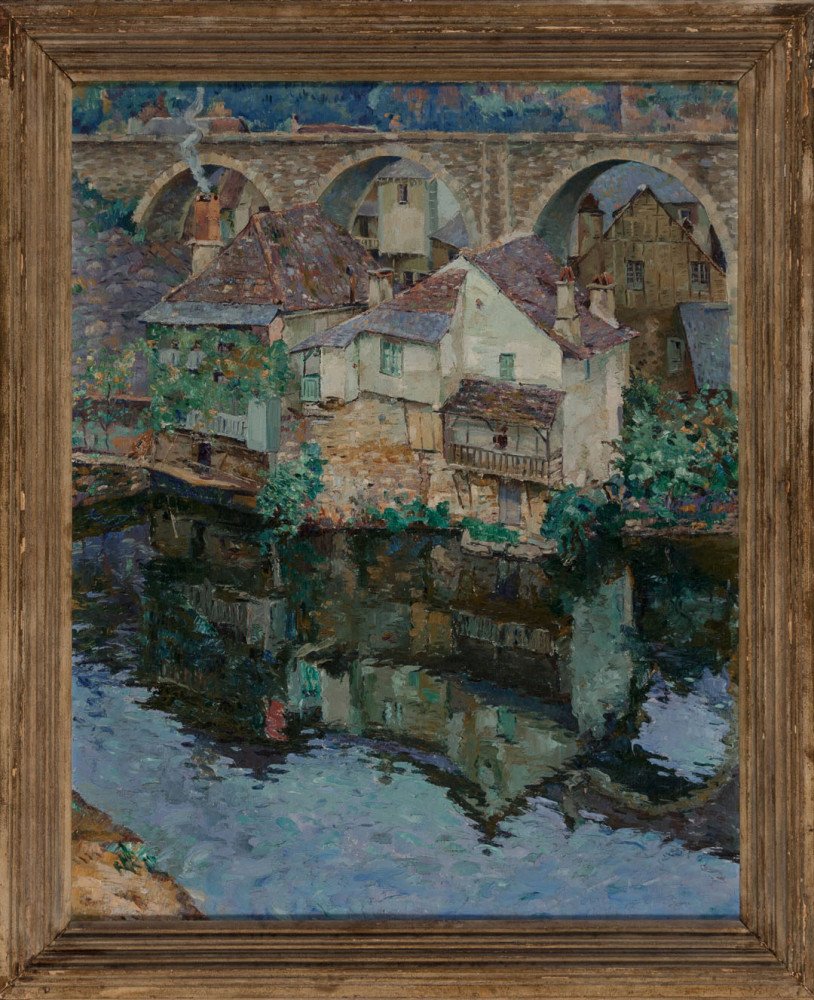Artist: Abel G. Warshawsky (American, 1883–1962)
Medium: Oil on canvas
Signature: Signed upper right
Dimensions:
31.5 x 25 inches
37 x 30.75 inches, framed
Description:
Impressionist Abel Warshawsky spent most of his life in France, where he sought out landscape subjects which often have the effect of looking through layers of time. As an artist he was drawn to paint contemporary scenes in provincial villages which retain ancient architectural structures that carve into the exquisite natural landscape. During the early 1930s, Warshawsky seized upon the subject of the medieval hill town of Uzerche, picturesquely situated above a deeply incised meander of the Vézère River in southwest-central France (40 miles south of the porcelain-making town of Limoges, east of Bordeaux and west of Clermont-Ferrand). As such Uzerche is a natural citadel. The construction of the gardens along the Vézère, supported by little walls, are as noteworthy as the town's unique position and particular architectural features. As the rocky ground originally made it unsuitable for agriculture, the view of the lower part of the town is dominated by flowers, orchards and vegetable gardens.
The town's roots go back to the earliest recorded history of the country, and its spectacular location is part of that history. Gaulish tribes settled in Uzerche as early as the 2nd century BCE, and Julius Caesar's Roman legions were there in 51 BCE, reputedly the last place they conquered in their march deep into the heart of France.
Uzerche benefitted for centuries from being at the crossroads of two major trading routes. French and English kings as well as popes visited regularly and recognized the strategic value of such an easily defended site stated along a major tributary of the Dordogne River. The secular leaders established royal courts, tax bureaus, and other administrative offices at Uzerche, and during the medieval period the town was so wealthy that a popular saying held that "he who has a house in Uzerche has a capital in Limousin [the rural region where Uzerche is located]."
With few exceptions, most of the structures in Uzerche's upper town date from the richest period of its history (1300-1700). The town is crowned at its highest point by the Romanesque Abbey Church of Saint Peter, where construction began in 1030 AD. The abbey had an important role in the military defense of the city, for during the 13th and 14th centuries towers were added (as important lookout points) and walls were fortified.
Interestingly, in designing the present work, Warshawsky painted the lower town rather than the more storied upper town capped by the Abbey. The major element of masonry he recorded was the 19th-century viaduct (completed in 1902 and closed in 1969) which carried a railway into town. Its repetitive round arches establish a critical decorative element in the composition. In designing this painting, the artist drew upon important conventions he had absorbed from the French Impressionists during the first decade of the century, when he had first come to study in France. Notably, he composed his painting with an extremely high horizon line (the viaduct), a device taken ultimately from the Impressionists' study of Japanese prints. By placing the horizon line near the very top of the picture, Warshawsky allowed the design to seem to unfurl from that spot, like a scroll, serving to flatten the space.
The sensation Warshawsky created in this vertical slice of a scene of old houses, with their various sags and shifts, clinging to the banks of the river below, where they are then reflected almost larger than life, is nearly Proustian: à la recherche du temps perdu (in search of lost time). Everything seems to be as it ever was, with only gravity making structures a little worse for the wear perhaps, while the restless river continually flows by.
Abel Warshawsky was an American expatriate artist who first introduced the Cleveland School painters to Impressionism. Throughout most of his career he painted in France and sold his work to an eager clientele back home.
-Marianne Berardi
Type of Work: Paintings
See More In:
Other works by Abel G. Warshawsky
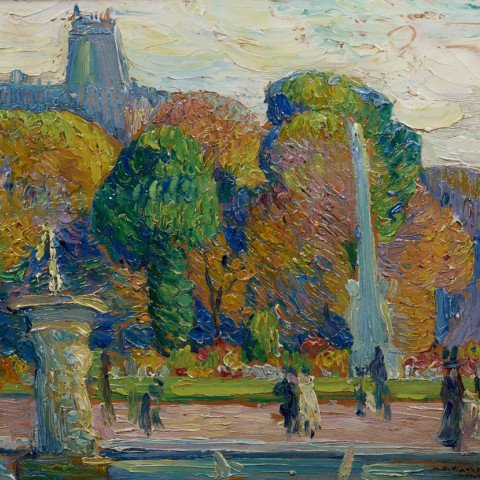
The Luxembourg Gardens, Paris, 1909 Abel G. Warshawsky
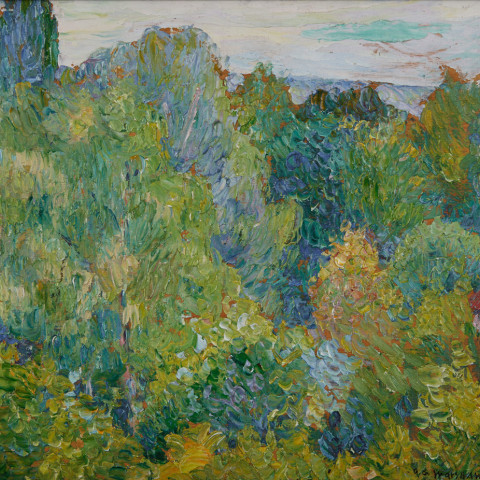
Au Garche, France, 1910 Abel G. Warshawsky
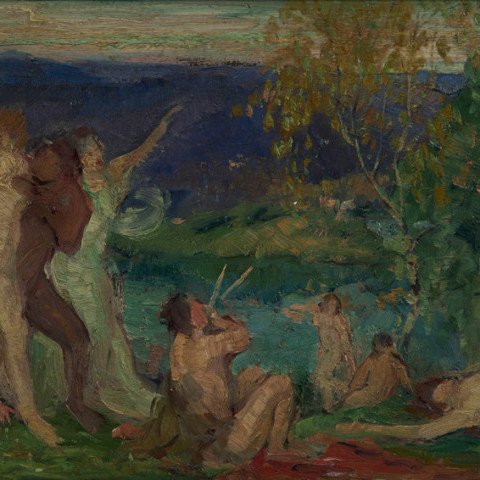
Mural Study Abel G. Warshawsky
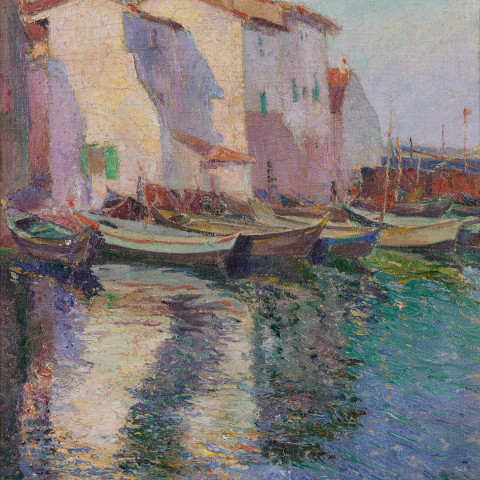
Fishing Boat Reflections, France, c. 1915 Abel G. Warshawsky
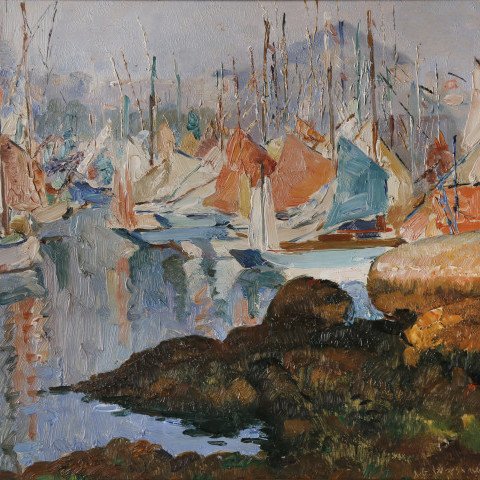
Harbor Scene Abel G. Warshawsky
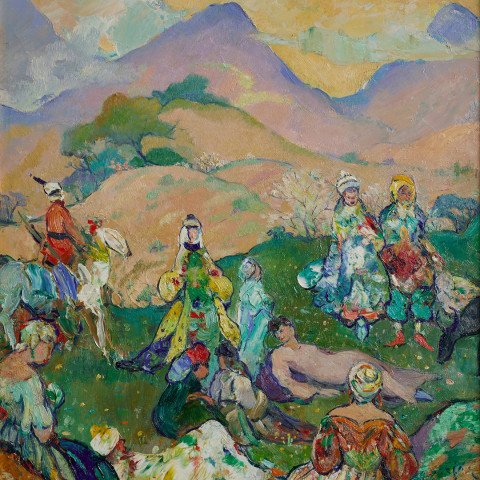
Spring Fantasy, 1948 Abel G. Warshawsky
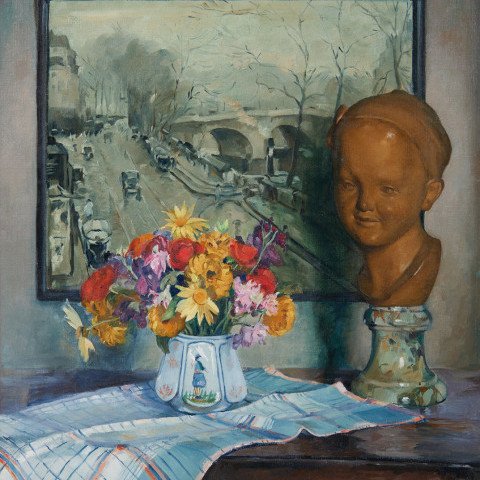
Still Life Abel G. Warshawsky

SOLD
California Landscape, c. 1950 Abel G. Warshawsky
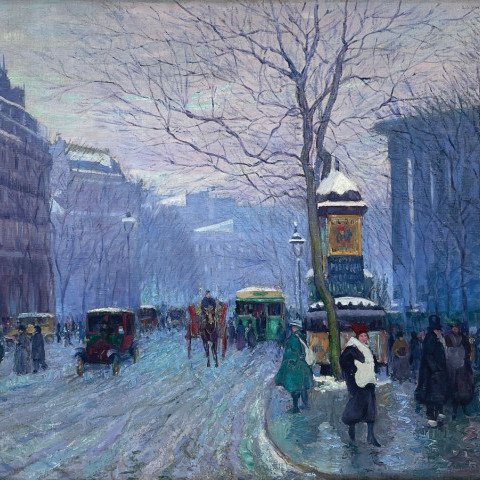
SOLD
Place de la Bourse , c. 1914 Abel G. Warshawsky
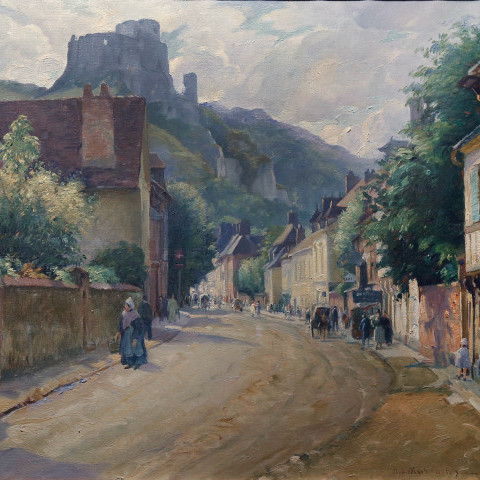
SOLD
Les Andelys, Normandy with the ruins of Chateau Gaillard in the distance Abel G. Warshawsky
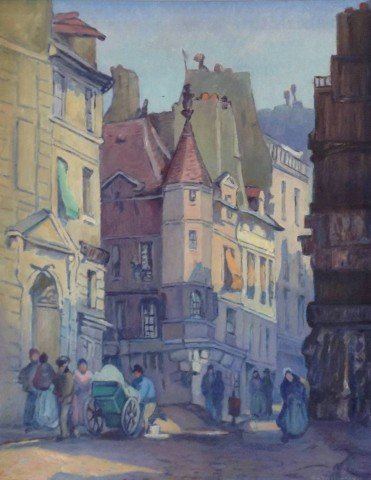
SOLD
Rue Ecole de Medecine, Paris Abel G. Warshawsky
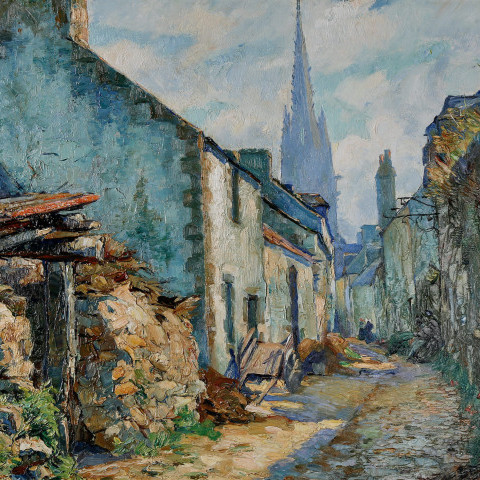
SOLD
Narrow Street, Finistere, France Abel G. Warshawsky


